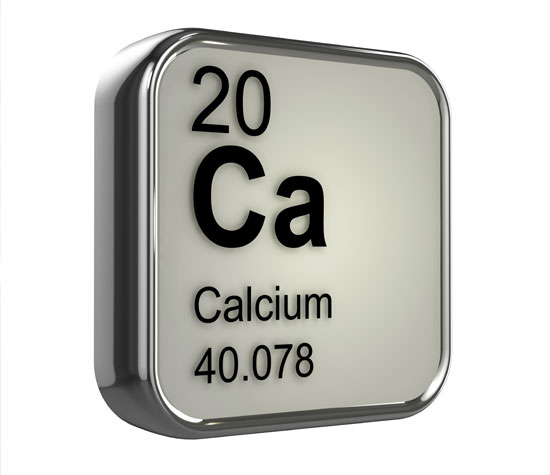Page Contents
OVERVIEW
This page is dedicated to organizing various examples of standardized exam questions whose answer is hypocalcemia. While this may seem a odd practice, it is useful to see multiple examples of how hypocalcemia will be characterized on standardized exams (namely the boards and the shelf exams). This page is not meant to be used as a traditional question bank (as all of the answers will be the same), however seeing the classic “test” characterization for a disease is quite valuable.

KEY CHARACTERISTICS OF THIS CONDITION (ON EXAMS)
When it comes to standardized exams, each condition has its own “code” marked by key buzzwords, lab findings, clues, etc. If you are well versed in this code you will be able to more quickly identify the condition that is being discussed, and get the right answer on the exam you are taking. Below is the “code” for hypocalcemia.
Chief Complaints:
- Numbness/tingling (parasthesia) can be felt by the patient
- Muscle cramps
Patient History:
- Recent thyroidectomy: this can cause damage to the parathyroid glands leading to hypocalcemia
- Large volumes of fluid resuscitation: can dilute the concentration of calcium in the serum.
- Transfusion of multiple units of blood: chelation agents in transfused blood can cause hypocalcemia.
Clinical Workup:
- Trousseau sign: forceful flexion of her wrist with abduction of the thumb when her blood pressure cuff was tightened
- Chvotsek’s sign: tapping of the region anterior to the ears causes twitching of the perioral muscles
- Hyperreflexia can be detected on the neurological workup.
- QTc Prolongation can be seen on the EKG as a result of this electorate abnormality
QUESTION EXAMPLES
Question # 1
30-year-old woman is hospitalized following a traffic collision. She was returning home after a evening out to the club, and she rolled her car off the road. In the emergency department she was found to have severe hypotension, hip fracture, multiple rib fractures, and there was also evidence of blunt trauma. The patient underwent an emergent laparotomy, which real deliver laceration and extensive bleeding in the abdominal cavity. She was stabilized with surgery, fluids, and a blood transfusion. Soon after her operation the patient developed numbness in her fingertips and also around her lips. She also developed forceful flexion of her wrist with abduction of the thumb when her blood pressure cuff was tightened. Her temperature is 99.8°F, blood pressure is 120/70 mmHg, pulse is 80/min, and respirations are 15/min. Physical exam is remarkable for hyperactive reflexes diffusely. There is no muscle weakness. What is the diagnosis in this patient?
Explanation # 1
high volume given to patient (fluids/blood) + paresthesia + carpal spasm/Trousseau sign + hyperreflexia = hypocalcemia
Question # 2
A 40 year old woman recently underwent a thyroidectomy for Grave’s disease. She complains of anxiety, muscle cramps, and poor sleep. her medications include a multivitamin and omeprazole for acid reflux disease. Her temperature is 98.4°F, blood pressure is 145/85/mm Hg, and pulse is 85/min. An electrocardiogram shows normal sinus rhythm with a QTc of 510 msec. What is the likely diagnosis?
Explanation # 2
Recent thyroidectomy (parathyroids might be damaged) + QTc prolongation = hypocalcemia
Question # 3
A 58 year old female is recovering after a total thyroidectomy for a papillary carcinoma. Her temperature is 99.6°F, blood pressure is 125/80 mm Hg, and pulse is 90/min. At a post-op exam, a medical student learns that the patient is complaining of numbness and tingling around her mouth, hands, and feet. What is the likely diagnosis?
Explanation #3
Recent thyroidectomy (parathyroids might be damaged) + numbness/tingling = hypocalcemia
Question # 4
A 45 year old male is seen in the ED because he has been experiencing very painful muscle cramps. He has also noticed a tingling sensation around his mouth that comes and goes. Currently his blood pressure is 100/70 mm Hg, and his heart rate is 70 bpm. A physical exam reveals that light tapping of the region anterior to the ears causes twitching of the perioral muscles. What is the likely diagnosis in this patient?
Explanation #4
Numbness/tingling + Chvotsek’s sign = hypocalcemia
Question # 5
A 35 year old male comes to the hospital after being a in a traffic collision. He suffered from blunt trauma to the torso, and has femur fractures on both sides. His past medical history is unremarkable.e Currently his blood pressure is 80/45 mm Hg and pulse 115/min. The patient is resuscitated aggressively with IV fluids and receivers a few units of blood. After he is stabilized the patient notices that he has a tingling sensation in all of his digits. What is the likely diagnosis in this patient?
Explanation #5
Large volume of fluid resuscitation + given multiple units of blood (contain calcium chelators) + tingling = hypocalcemia
Question # 6
A 55 year old male comes to the clinic 3 days after he experiences his first generalized seizures. He has been noticing feelings of “pins and needles” around his mouth and in his hands for the past few weeks. He also has noticed that he occasionally will have involuntary contraction of the muscles in his legs and feet. Currently his pulse is 85 bpm and his blood pressure is 140 mm Hg. A neurological exam is notable for diffusely increased reflexes. What is the likely diagnosis in this patient?
Explanation #6
Numbness + muscle cramps/spasms + hyperreflexia = hypocalcemia
TESTABLE FACTS ABOUT THIS CONDITION (BEYOND ITS IDENTIFICATION)
Many questions on standardized exams go beyond simply recognizing the underlying condition. Often there are specific testable facts regarding some aspect of the disease’s pathophysiology/management/clinical implications that are commonly asked. Some of these are listed below:
Caauses:
- Thyroidectomy: damage/removal of the parathyroid glands
- Dilution: from large volumes of fluid resuscitation
- Chelation: from receiving multiple unites of blood products (that contain chelating agents).
Page Updated: 04.09.2018